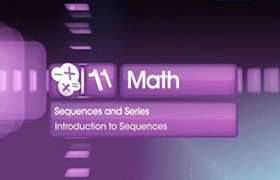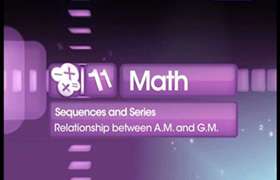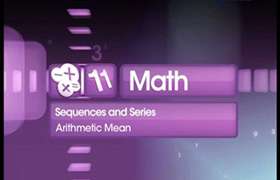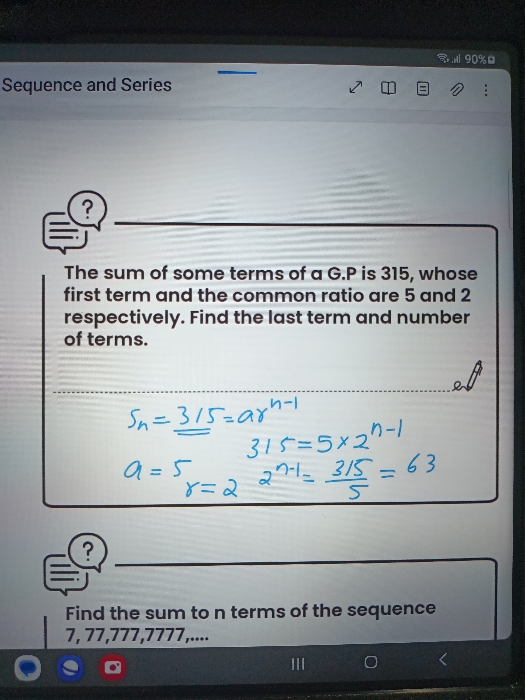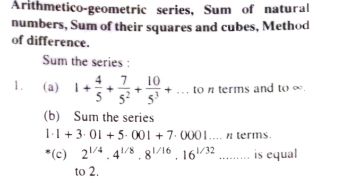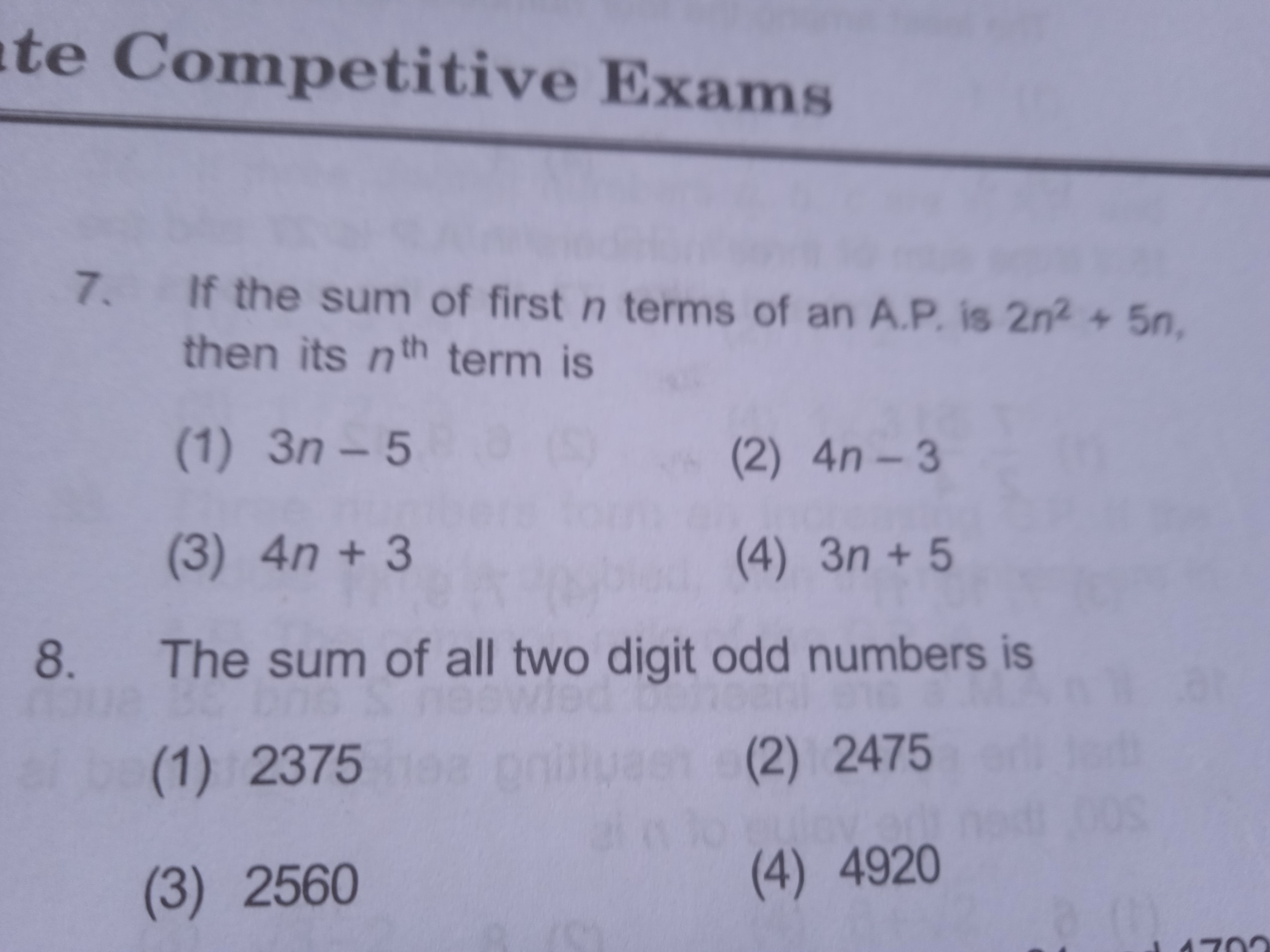CBSE Class 11-science Answered
If pth,qth,rth,sth,terms of an A.P. are in G.P., then show that(p-q),(q-r),(r-s) are also in G.P.
Asked by | 03 Jul, 2011, 03:37: PM
Let 1st term be a+ t and difference be t
We need to prove
(p-q)/(q-r) = (q-r)/(r-s)
So pth term = a + pt
Qth terem= a + qt
Rth term = a + rt
And sth term = a + st
Thery are in GP then
(a+st)/(a+rt) = (a+rt)/(a+qt) = (a+qt)/a+pt) ( common ratio)
Now if (a/b) = (c/d) then both = (a-c)/(b-d)
Using this we get
From (a+st)/(a+rt) = (a+rt)/(a+qt) both = (st-rt)/(rt-qt) = (s-r)/(r-q)
From (a+rt)/(a+qt) = (a+qt)/a+pt) both = (r-q)/(q-p) same as aboth
Hence
(s-r)/(r-q) = (r-q)/(q-p)
Or
(r-s)/(q-r) = (q-r)/(p-q) multiplying numerator and denominator of both sides by -1
Hence Proved
We need to prove
(p-q)/(q-r) = (q-r)/(r-s)
So pth term = a + pt
Qth terem= a + qt
Rth term = a + rt
And sth term = a + st
Thery are in GP then
(a+st)/(a+rt) = (a+rt)/(a+qt) = (a+qt)/a+pt) ( common ratio)
Now if (a/b) = (c/d) then both = (a-c)/(b-d)
Using this we get
From (a+st)/(a+rt) = (a+rt)/(a+qt) both = (st-rt)/(rt-qt) = (s-r)/(r-q)
From (a+rt)/(a+qt) = (a+qt)/a+pt) both = (r-q)/(q-p) same as aboth
Hence
(s-r)/(r-q) = (r-q)/(q-p)
Or
(r-s)/(q-r) = (q-r)/(p-q) multiplying numerator and denominator of both sides by -1
Hence Proved
Answered by | 04 Jul, 2011, 09:33: AM
Application Videos
Concept Videos
CBSE 11-science - Maths
Asked by cubesneha.2005 | 07 Feb, 2024, 12:55: AM
CBSE 11-science - Maths
Asked by hridayjayaram085 | 31 Jan, 2024, 10:53: PM
CBSE 11-science - Maths
Asked by prashantbharati75 | 29 Sep, 2023, 09:30: AM
CBSE 11-science - Maths
Asked by Bhaveshkr211 | 30 Jul, 2023, 05:20: PM
CBSE 11-science - Maths
Asked by sakshirana374 | 24 Jul, 2022, 05:39: PM
CBSE 11-science - Maths
Asked by sanjuktamukherjee165 | 24 Oct, 2021, 11:04: AM
CBSE 11-science - Maths
Asked by rahulksinha200 | 16 Oct, 2021, 02:08: PM
CBSE 11-science - Maths
Asked by Vibhorjarora798 | 21 Aug, 2021, 05:43: PM
CBSE 11-science - Maths
Asked by shivangkarol | 16 Jun, 2021, 01:18: PM


